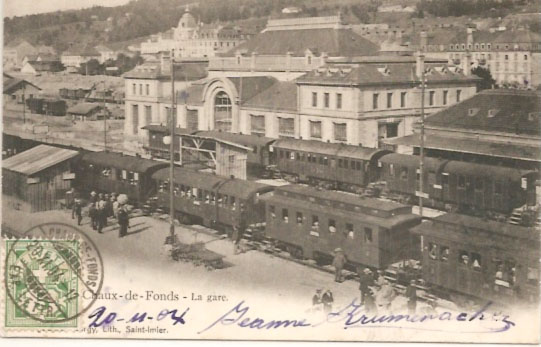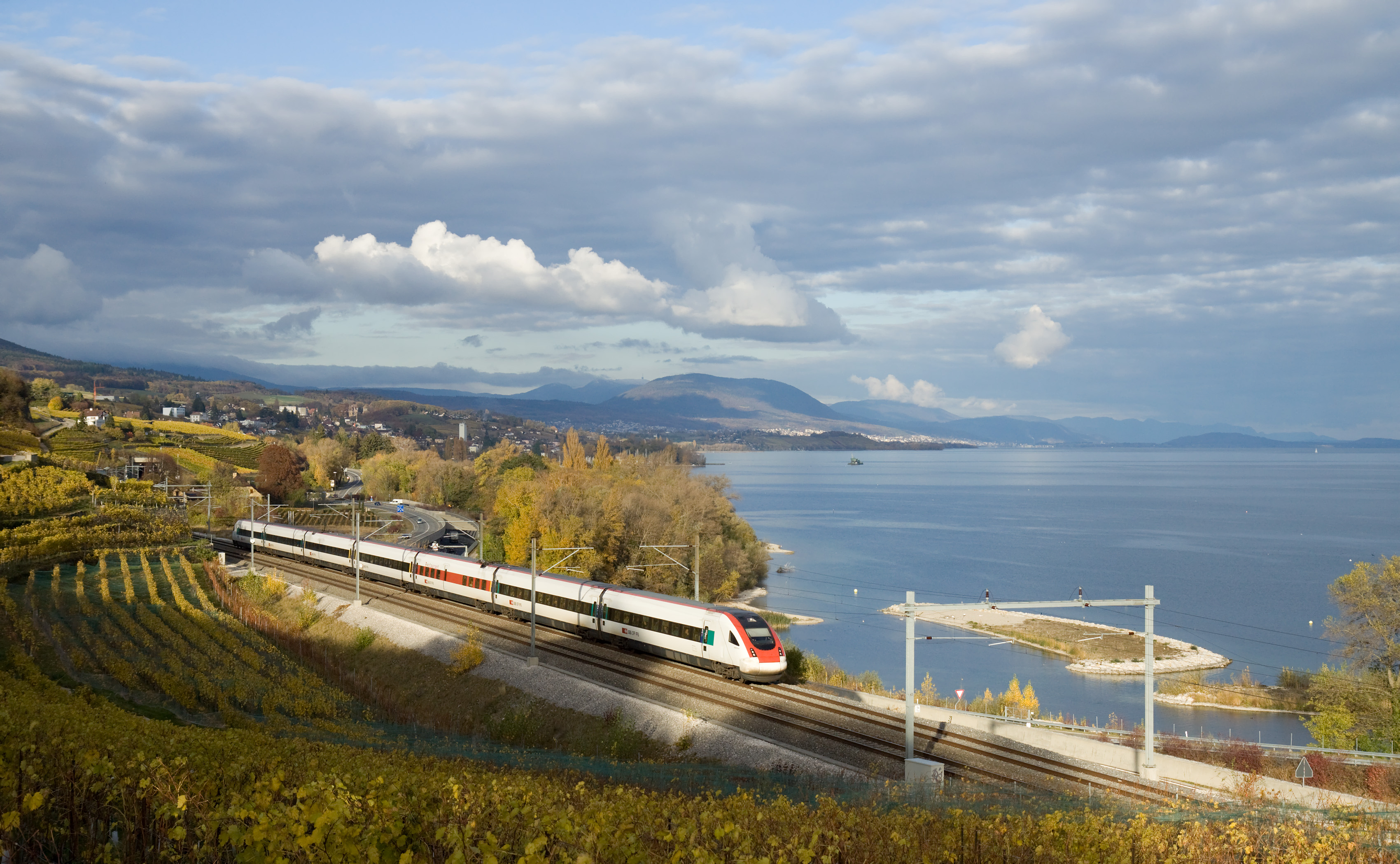|
Bern–Neuchâtel Railway
The Bern–Neuchâtel railway is a Swiss railway that was opened on 1 July 1901 by the Bern–Neuchâtel Railway (''Bern-Neuenburg-Bahn''). It is now part of the BLS AG network and is also called the ''Direkt Linie'' (direct line), because it crosses the Grand Marais in an almost straight line. In addition, the connection is part of the shortest railway line between Bern and Paris. Route The line was initially designed as a single track line for its full length. For the most part, it is still single track, but it is gradually being doubled. The –Holligen (BLS depot) section is shared with the Bern–Belp–Thun railway (''Gürbetalbahn'') and the line to Schwarzenburg. There was a connection to the Flamatt–Gümmenen railway (''Sensetalbahn''—Sense Valley Railway) in Gümmenen between 1904 and 1993. Immediately in front of Kerzers station, the line crosses the Palézieux–Kerzers railway (''Broyelinie''–Broye line) at a 60° angle. This is the only full crossin ... [...More Info...] [...Related Items...] OR: [Wikipedia] [Google] [Baidu] |
15 KV AC Railway Electrification
Railway electrification systems using at are used on transport railways in Germany, Austria, Switzerland, Sweden, and Norway. The high voltage enables high power transmission with the lower frequency reducing the losses of the traction motors that were available at the beginning of the 20th century. Railway electrification in late 20th century tends to use AC systems which has become the preferred standard for new railway electrifications but extensions of the existing networks are not completely unlikely. In particular, the Gotthard Base Tunnel (opened on 1 June 2016) still uses 15 kV, 16.7 Hz electrification. Due to high conversion costs, it is unlikely that existing systems will be converted to despite the fact that this would reduce the weight of the on-board step-down transformers to one third that of the present devices. History The first electrified railways used series-wound DC motors, first at 600 V and then 1,500 V. Areas with 3 kV ... [...More Info...] [...Related Items...] OR: [Wikipedia] [Google] [Baidu] |
Jura Mountains
The Jura Mountains ( , , , ; french: Massif du Jura; german: Juragebirge; it, Massiccio del Giura, rm, Montagnas da Jura) are a sub-alpine mountain range a short distance north of the Western Alps and mainly demarcate a long part of the French–Swiss border. While the Jura range proper (" folded Jura", ''Faltenjura'') is located in France and Switzerland, the range continues as the Table Jura ("not folded Jura", ''Tafeljura'') northeastwards through northern Switzerland and Germany. Name The mountain range gives its name to the French department of Jura, the Swiss Canton of Jura, the Jurassic period of the geologic timescale, and the Montes Jura of the Moon. It is first attested as ''mons Iura'' in book one of Julius Caesar's ''Commentarii de Bello Gallico''. Strabo uses a Greek masculine form ''ὁ Ἰόρας'' ("through the Jura mountains", ''διὰ τοῦ Ἰόρα ὄρους'') in his ''Geographica'' (4.6.11). Based on suggestions by Ferdinand de Saussure, early c ... [...More Info...] [...Related Items...] OR: [Wikipedia] [Google] [Baidu] |
1901 Establishments In Switzerland
Nineteen or 19 may refer to: * 19 (number), the natural number following 18 and preceding 20 * one of the years 19 BC, AD 19, 1919, 2019 Films * ''19'' (film), a 2001 Japanese film * ''Nineteen'' (film), a 1987 science fiction film Music * 19 (band), a Japanese pop music duo Albums * ''19'' (Adele album), 2008 * ''19'', a 2003 album by Alsou * ''19'', a 2006 album by Evan Yo * ''19'', a 2018 album by MHD * ''19'', one half of the double album ''63/19'' by Kool A.D. * ''Number Nineteen'', a 1971 album by American jazz pianist Mal Waldron * ''XIX'' (EP), a 2019 EP by 1the9 Songs * "19" (song), a 1985 song by British musician Paul Hardcastle. * "Nineteen", a song by Bad4Good from the 1992 album ''Refugee'' * "Nineteen", a song by Karma to Burn from the 2001 album ''Almost Heathen''. * "Nineteen" (song), a 2007 song by American singer Billy Ray Cyrus. * "Nineteen", a song by Tegan and Sara from the 2007 album '' The Con''. * "XIX" (song), a 2014 song by Slipknot. ... [...More Info...] [...Related Items...] OR: [Wikipedia] [Google] [Baidu] |
Railway Lines Opened In 1901
Rail transport (also known as train transport) is a means of transport that transfers passengers and goods on wheeled vehicles running on rails, which are incorporated in tracks. In contrast to road transport, where the vehicles run on a prepared flat surface, rail vehicles (rolling stock) are directionally guided by the tracks on which they run. Tracks usually consist of steel rails, installed on sleepers (ties) set in ballast, on which the rolling stock, usually fitted with metal wheels, moves. Other variations are also possible, such as "slab track", in which the rails are fastened to a concrete foundation resting on a prepared subsurface. Rolling stock in a rail transport system generally encounters lower frictional resistance than rubber-tyred road vehicles, so passenger and freight cars (carriages and wagons) can be coupled into longer trains. The operation is carried out by a railway company, providing transport between train stations or freight customer facilit ... [...More Info...] [...Related Items...] OR: [Wikipedia] [Google] [Baidu] |
Railway Lines In Switzerland
Rail transport (also known as train transport) is a means of transport that transfers passengers and goods on wheeled vehicles running on rails, which are incorporated in tracks. In contrast to road transport, where the vehicles run on a prepared flat surface, rail vehicles (rolling stock) are directionally guided by the tracks on which they run. Tracks usually consist of steel rails, installed on sleepers (ties) set in ballast, on which the rolling stock, usually fitted with metal wheels, moves. Other variations are also possible, such as "slab track", in which the rails are fastened to a concrete foundation resting on a prepared subsurface. Rolling stock in a rail transport system generally encounters lower frictional resistance than rubber-tyred road vehicles, so passenger and freight cars (carriages and wagons) can be coupled into longer trains. The operation is carried out by a railway company, providing transport between train stations or freight customer facilit ... [...More Info...] [...Related Items...] OR: [Wikipedia] [Google] [Baidu] |
RegioExpress
RegioExpress (RE) is a fast regional train service in Switzerland, run by Swiss Federal Railways (SBB CFF FFS) or other railway companies (such as TILO, BLS, tpf, transN, THURBO or RhB). It is comparable to the Regional-Express in Germany, Austria and Luxembourg. Its speed is considerably faster than regional trains at the same level, as it does not stop at all stations served by the regional trains. Nonetheless, it is slightly slower than InterRegio trains. Swiss Federal Railways describes the trains as ones that serve "rapidly into the regions". Until the 2003 timetable overhaul (December 2002 to December 2003), the RegioExpress was limited in circulation. One of the main lines which ran as a RegioExpress line (abbreviation: RX) was the ''Rheintal Express'', from St. Gallen through Sargans to Chur (the other was the ''CityVogel'' from Zurich to Konstanz). As of the 2004 timetable overhaul, the RegioExpress was introduced as faster Regio (formerly regional) trains; the ... [...More Info...] [...Related Items...] OR: [Wikipedia] [Google] [Baidu] |
Bern S-Bahn
The Bern S-Bahn (german: S-Bahn Bern; french: RER Berne) is an S-Bahn commuter rail network focused on Bern, the capital city of Switzerland. The network is roughly coterminous with Bern's urban agglomeration. With approximately 9 million train kilometres per year, the Bern S-Bahn is the second-largest S-Bahn in Switzerland. It handles around 100,000 passengers daily (175,000 on weekdays), and thus carries the majority of the agglomeration's regional public transport traffic. History As early as 1974, (VBW), forerunner of Regionalverkehr Bern-Solothurn (RBS), began operating S-Bahn-style clock-face schedule services in the Bern area. The next step came in 1987, when Swiss Federal Railways (SBB) began running trains from through to or on a half-hourly schedule. The second line began operation on 28 May 1995, operating from to . At this time the "S"-style designations were introduced to differentiate the lines. The next expansion occurred in 1998, with the commissioning o ... [...More Info...] [...Related Items...] OR: [Wikipedia] [Google] [Baidu] |
Neuchâtel–Le Locle-Col-des-Roches Railway
The Neuchâtel–Le Locle-Col-des-Roches railway is a single-track standard-gauge line of the Swiss Federal Railways (SBB). History The line from Neuchâtel to La Chaux-de-Fonds, continuing to Le Locle, was built in four stages between 1857 and 1860 by the Jura industriel (Jura industrial, JI). The JI was taken over in 1875 by the Jura bernois (Bernese Jura Railway, JB), which changed its name to the ''Jura–Bern–Luzern-Bahn'' (JBL) in 1884. The JBL extended the railway to the France–Switzerland border at Le Locle-Col-des-Roches (then Brenets-Col-des-Roches) and connected it through the Col des Roches tunnel and the line to Besançon with the French railway network of the Paris-Lyon-Méditerrané (PLM) company. On 1 January 1886, the 38.21-kilometre-long Neuchâtel–Le Locle-Col-des-Roches railway line was separated from the Jura-Bern-Luzern-Bahn (JBL) and integrated into the newly founded Jura neuchâtelois (JN), which was taken over by the canton of Neuchâtel. ... [...More Info...] [...Related Items...] OR: [Wikipedia] [Google] [Baidu] |
Jura Foot Railway
The Jura Foot Line (french: ligne du Pied-du-Jura, german: Jurafusslinie) or Jura South Foot Line, is a railway line in Switzerland. It runs from Olten along the foot of the southern Jura range through Solothurn, Grenchen, Biel/Bienne, Neuchâtel, Yverdon-les-Bains and Morges to Lausanne. It is one of two routes used by intercity trains between Geneva and Zürich. The other is the Midland line (German: ''Mittellandlinie'') which connects Olten via Langenthal, Burgdorf, Bern, Fribourg, Lausanne to Morges. The line was built by five railway companies, which after several mergers were absorbed into the Swiss Federal Railways in 1903. The line is electrified at 15 kV 16.7 Hz AC and is two track almost throughout. The sole remaining single section, south of Twann station and north of Neuveville, is the location of the new Ligerz Tunnel. This is due to open at the end of 2026 and will complete the double-tracking of the line. The southern part of the line forms part of t ... [...More Info...] [...Related Items...] OR: [Wikipedia] [Google] [Baidu] |




